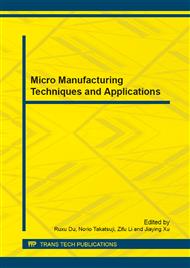p.39
p.45
p.53
p.63
p.69
p.75
p.81
p.87
p.93
The Acoustic Enclosure Design of the Refrigeration Compressor
Abstract:
In this paper, in order to reduce the external radiation of food refrigeration compressors noise, the main noise frequency analysis based on the theoretical calculation and practical experiment is carried out and the acoustic enclosure design is conducted. Conventional sound-absorbing material adopts rock wool and glass wool which have poor environmental protection. In the design process the environmental friendly melamine cotton is chosen as the sound-absorbing material that has not ever been massively adopted. Whats more, with a consideration of ventilation and heat dissipation, acoustic enclosure interior is designed with muffler air duct and the low-speed and low-noise fan. Therefore, both the normal operation of the compressor and the sound insulation of the acoustic enclosure are ensured in this way. Then with the sound level meter the noise A-weighted SPLs of the compressor with and without the enclosure are measured and are compared with each other. The results show that after covering the acoustic enclosure the compressors noise is less than 60 dB, which meets the design requirements of noise control. Therefore, it is easy to conclude that the sound insulation of the acoustic enclosure reaches the design standards and the acoustic enclosure design is feasible.
Info:
Periodical:
Pages:
75-80
Citation:
Online since:
February 2013
Authors:
Keywords:
Price:
Сopyright:
© 2013 Trans Tech Publications Ltd. All Rights Reserved
Share:
Citation:


